Explore why African waterholes come alive at dawn and dusk. Learn about animal behaviour, best viewing times, and how to enjoy waterhole safaris around Marloth Park and Needles Lodge.
Serpents of the Savannah: The Mystical Realm of Kruger’s Snakes

Kruger National Park is a haven for diverse wildlife, including a variety of snakes that embody the park's ecological richness. From the fast and venomous Black Mamba to the camouflage expert Vine Snake, and the non-venomous Cape Wolf Snake, these serpents showcase the adaptability and diversity of life in Kruger.
Kruger National Park, a mosaic of ecosystems, is not only a sanctuary for the majestic Big Five but also a haven for some of Africa's most fascinating and misunderstood inhabitants—its snakes. From the infamous Black Mamba to the elusive Cape Wolf Snake, each species tells a story of survival, adaptation, and intrigue. For the herpetology enthusiasts among us, let's shed our fears and explore the captivating world of these serpentine residents.
Black Mamba (Dendroaspis polylepis)
The Black Mamba, one of Africa's most notorious and respected snakes, carries a name that evokes both awe and fear. Contrary to what its name might suggest, its skin is not black but rather a dark grey or olive color, with the 'black' referring to the inky interior of its mouth. Renowned for its speed, agility, and potent venom, the Black Mamba is a creature of elegance and danger, inhabiting the savannahs, rocky hills, and open woodlands of Kruger National Park.
Behavior: The Black Mamba is incredibly agile and can move at speeds of up to 20 km/h (12 mph). It is predominantly a daytime hunter that relies on its speed and potent venom to catch prey.
Habitat: Prefers savannahs, rocky slopes, and open woodlands, often found in termite mounds or hollow tree trunks.
Weird & Wacky Fact: Despite its fearsome reputation, the Black Mamba only attacks humans when threatened or cornered. Its name might sound ominous, but it's actually derived from the dark color inside its mouth, not its skin color.
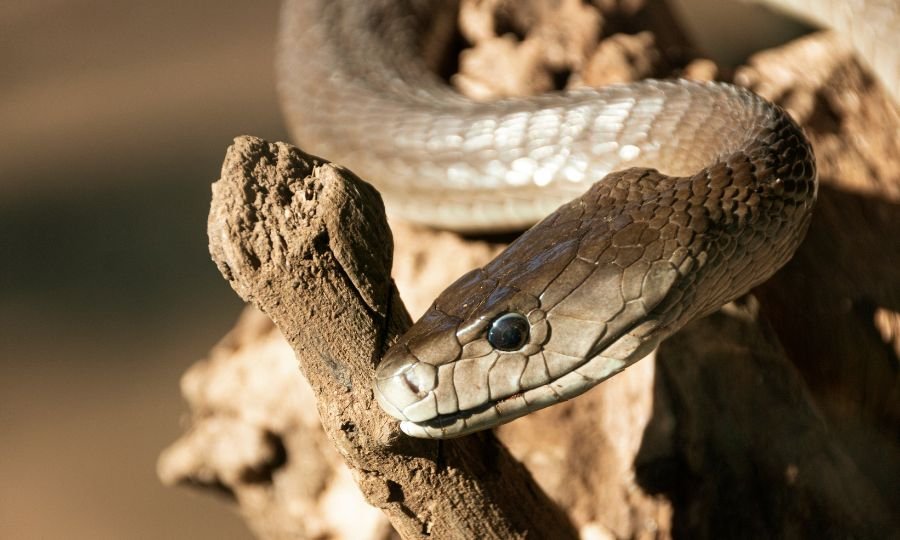
Vine Snake (Thelotornis capensis)
The Vine Snake, a master of disguise, is as elegant as it is deadly. Its slender, green body perfectly mimics the vines and branches among which it resides, making it nearly invisible to prey and predator alike. Found primarily in the dense, tree-filled areas of Kruger, this snake leads a secretive life, emerging mainly to bask in the sun or to hunt.
Behavior: It hunts by staying perfectly still and mimicking a branch, striking at birds and frogs that venture too close with its slow-acting venom.
Habitat: Lives in trees in dense forests and along riverbanks, blending in perfectly with its green, vine-like body.
Weird & Wacky Fact: The Vine Snake's mouth is unusually wide, allowing it to open it almost 180 degrees when threatened, displaying a startling, gape threat display.
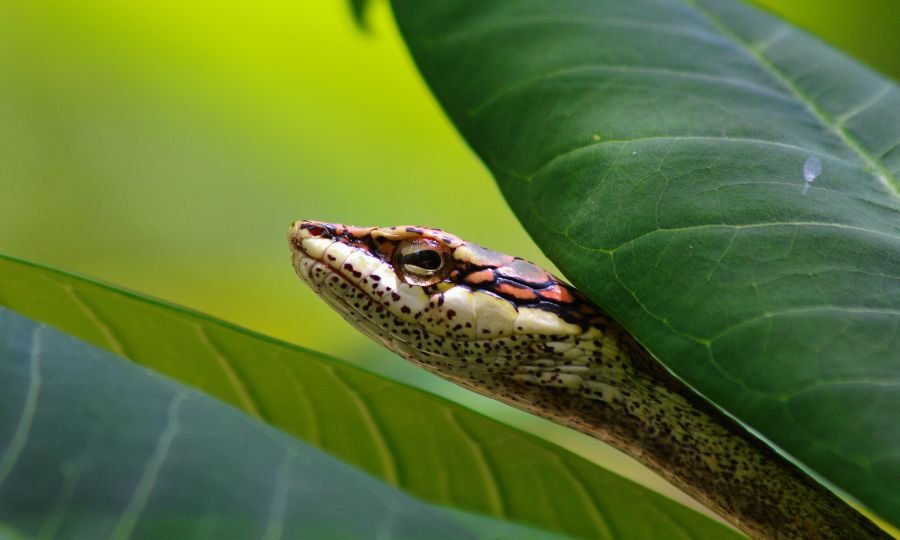
Olive Grass Snake (Psammophis mossambicus)
The Olive Grass Snake, also known as the Olive Whip Snake, is a testament to the beauty that slithers through the grasslands of Kruger National Park. Its sleek, olive-green body, designed for speed and agility, glides effortlessly through its grassy habitat in search of frogs, lizards, and rodents. This snake is a daytime hunter, relying on its keen eyesight and quick reflexes to catch unwary prey.
Behavior: This snake is diurnal, active during the day, and uses its speed to chase down various prey, including small mammals, birds, and reptiles.
Habitat: Favors grasslands and savannahs, where its olive coloration helps it blend into the vegetation.
Weird & Wacky Fact: Although primarily a hunter, the Olive Grass Snake can play dead when threatened, flipping onto its back and lying motionless until the danger passes.

Puff Adder (Bitis arietans)
The Puff Adder, with its distinctive 'puffing' defense mechanism, is both feared and admired. Its beautifully patterned body provides exceptional camouflage against the park's dry, sandy terrain, making it difficult to spot until it's nearly stepped on. Despite its formidable appearance and potent venom, the Puff Adder is a sluggish snake, preferring to lie in wait for its prey rather than pursue it.
Behavior: Known for its ambush predation tactics, lying in wait for unsuspecting prey. It's one of the fastest-striking snakes in the world.
Habitat: Prefers arid and savannah habitats but can also be found in some forests and rocky areas.
Weird & Wacky Fact: Puff Adders give birth to live young instead of laying eggs. The female can have up to 50 babies at a time, each one fully independent from birth.

Red-lipped Snake (Crotaphopeltis hotamboeia)
The Red-lipped Snake, with its distinctively vivid red lips, offers a splash of color against the natural backdrop of Kruger National Park. This mostly nocturnal serpent is known for its docility, preferring the cover of night to engage in its secretive hunting expeditions. Its preference for moist environments—marshes, riverbanks, and damp savannahs—makes it a less common sight for daytime visitors. Despite its gentle nature, the striking contrast of its bright lips against a darker body serves as a warning to potential predators, embodying the snake's unique adaptation to its environment.
Behavior: Mostly nocturnal and very docile. It's seldom seen by humans due to its secretive nature and preference for hunting at night.
Habitat: Thrives in moist environments, including marshes, along rivers, and in damp savannahs.
Weird & Wacky Fact: This snake uses its bright red lips as a warning sign to predators, a vivid display that contrasts sharply with its otherwise dark body.
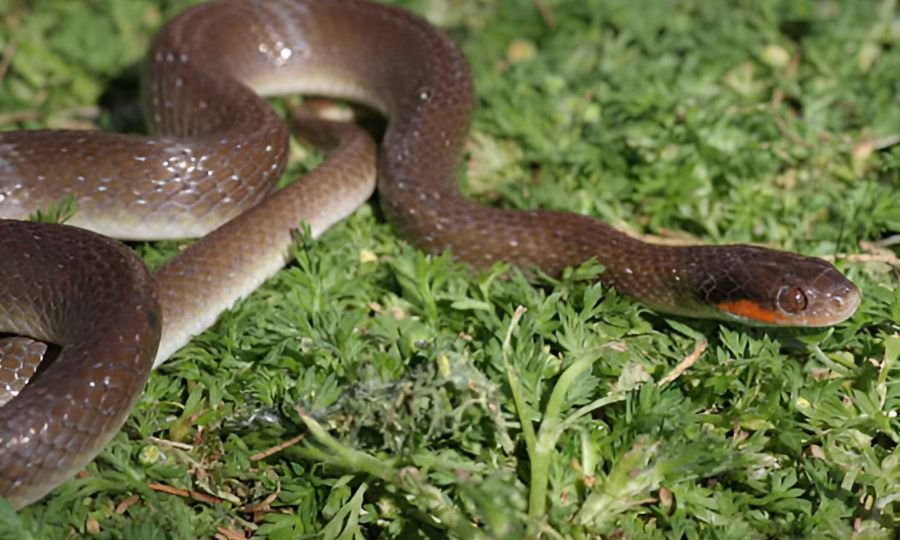
Boomslang (Dispholidus typus)
The Boomslang, an arboreal marvel, moves gracefully among the treetops of Kruger National Park's forested areas. Its ability to blend into the foliage, combined with a striking color variation, makes it a fascinating yet elusive creature. Known for its potent hemotoxic venom, the Boomslang spends most of its time in trees, striking unsuspecting prey with precision. The snake's fangs, uniquely positioned at the back of its jaw, require it to open its mouth almost 170 degrees to deliver a venomous bite, a testament to the remarkable adaptability and evolutionary traits of this species.
Behavior: Arboreal and highly venomous, it spends most of its time in trees. It's known for its striking color variation and potent hemotoxic venom.
Habitat: Prefers forested areas but can also be found in bushveld and savannah.
Weird & Wacky Fact: The Boomslang's fangs are located at the back of its jaw, requiring it to open its mouth almost 170 degrees to deliver a venomous bite.

Cape Wolf Snake (Lycophidion capense)
The Cape Wolf Snake, a testament to the diverse serpent population of Kruger National Park, thrives across a range of habitats, from dense forests to dry arid regions. Its non-venomous nature and harmless demeanor towards humans make it a misunderstood yet integral part of the park's ecosystem. Often found under rocks, logs, or within leaf litter, this efficient hunter preys on small vertebrates, contributing to the ecological balance. Despite its benign nature, the Cape Wolf Snake's resemblance to the venomous Cape Cobra often leads to unwarranted fear, highlighting the challenges of snake conservation and the need for increased public awareness about these vital reptiles.
Behavior: Non-venomous and harmless to humans, it hunts small vertebrates with determination and efficiency.
Habitat: Versatile in habitat preference, found from forests to arid regions, often under rocks, logs, or within leaf litter.
Weird & Wacky Fact: The Cape Wolf Snake is often mistaken for the venomous Cape Cobra due to its similar coloration, leading to unnecessary fear amongst those who encounter it.

Each snake within the Kruger National Park ecosystem offers a unique glimpse into the adaptability and diversity of reptilian life. From the deadly precision of the Black Mamba to the benign nature of the Cape Wolf Snake, these serpents continue to fascinate and remind us of the complex balance within natural habitats.
Further Reading
Discover the top 10 fascinating facts about the Cape buffalo—Africa’s powerful, social, and surprisingly strategic giant of the savanna. Read more now.
Discover the quirky charm and ecological role of warthogs in Kruger National Park and Marloth Park. Learn about their habits, social lives, and where to spot them near Needles Lodge.



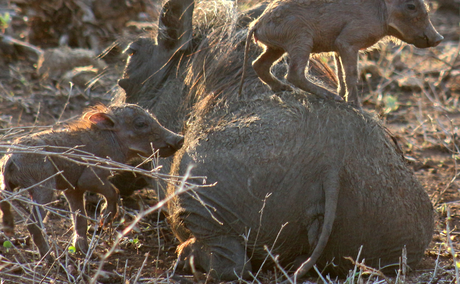
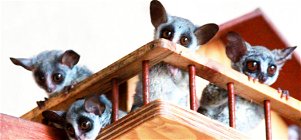

Share This Post